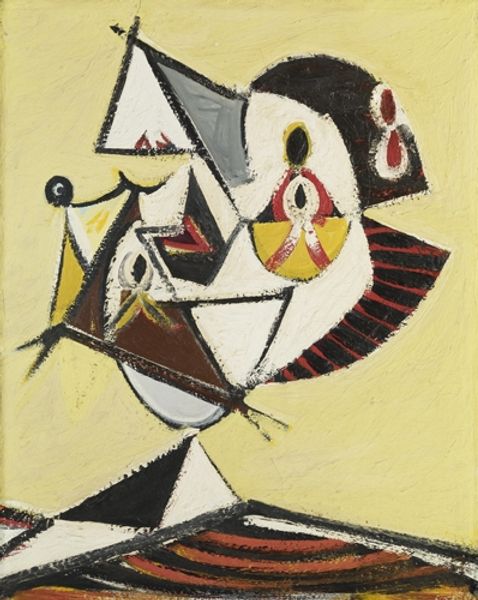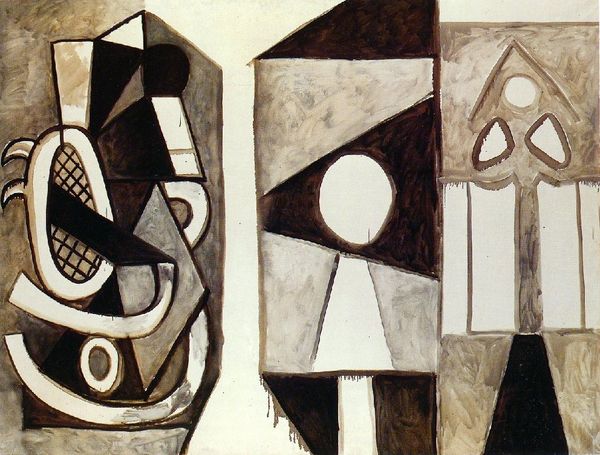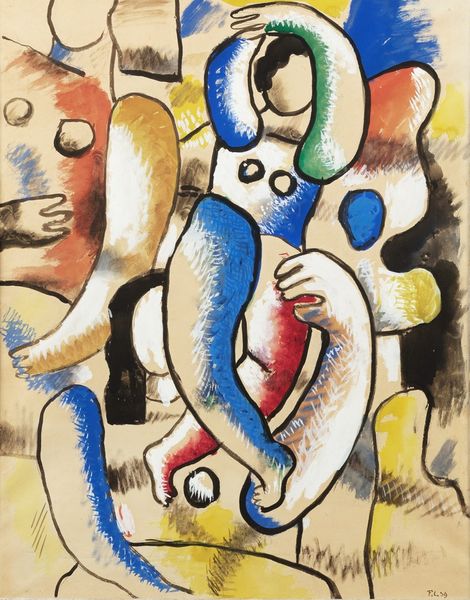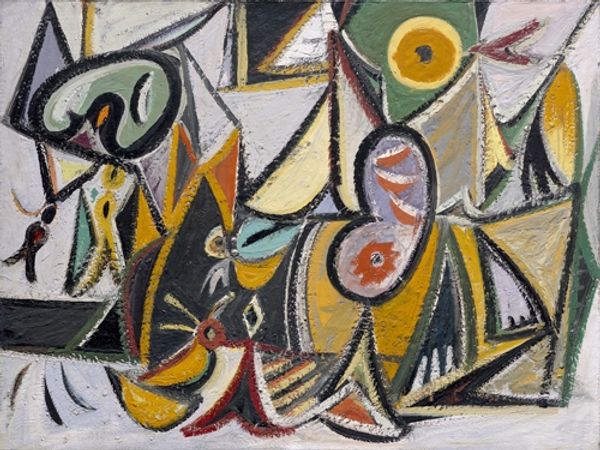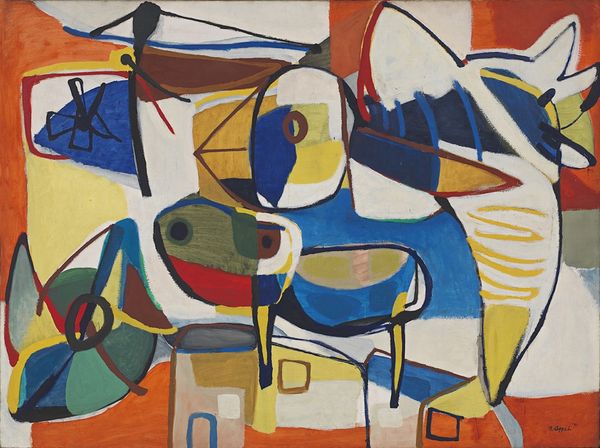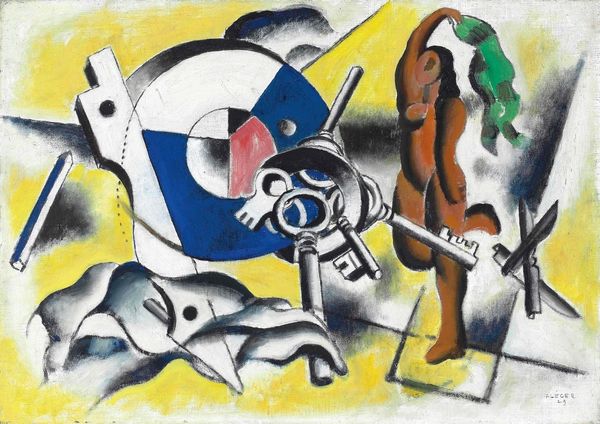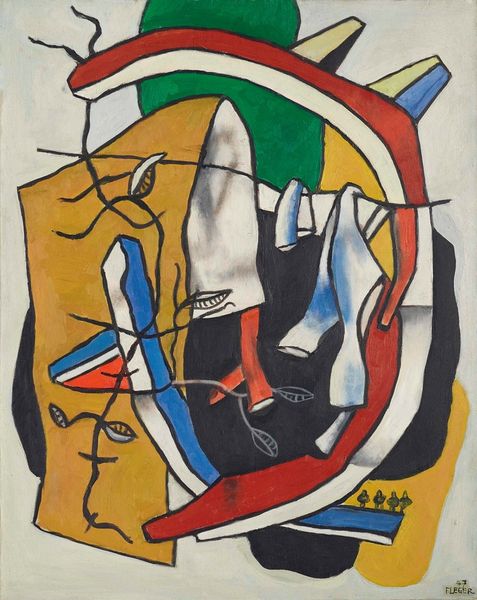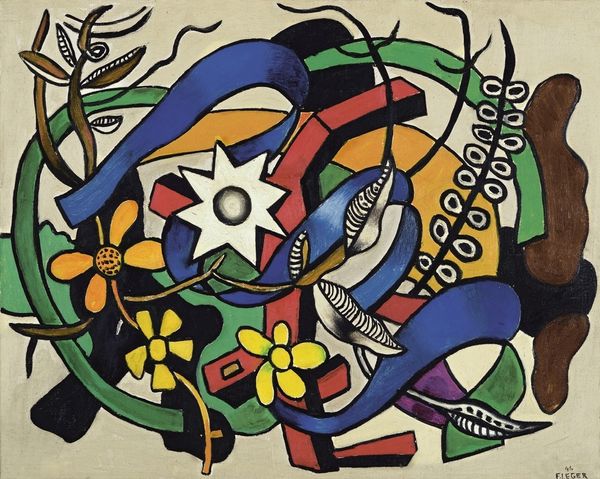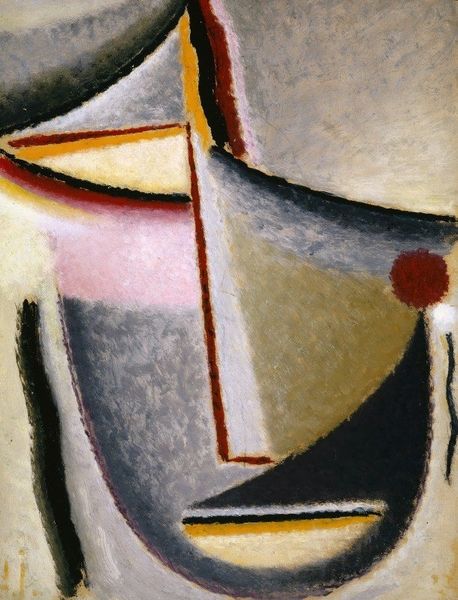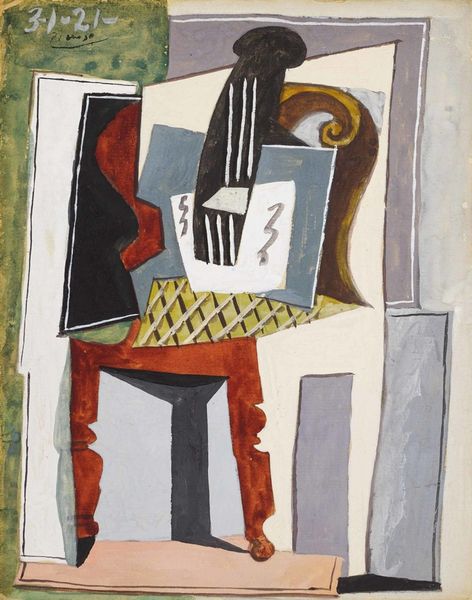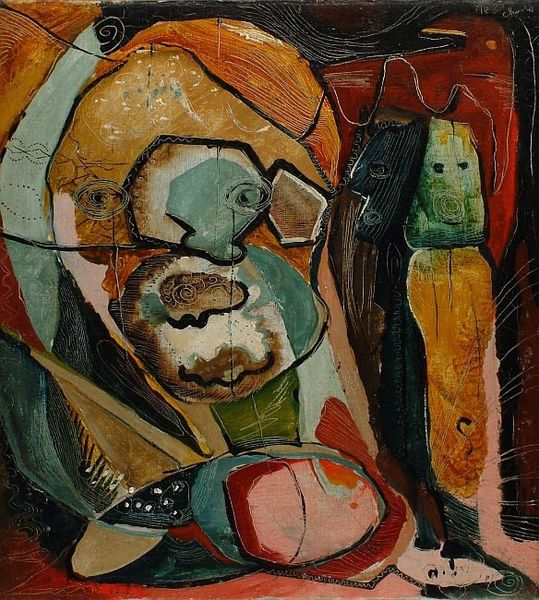
Copyright: Modern Artists: Artvee
Editor: Here we have Picasso's "Le Coq Saigné," painted in 1948, using oil on canvas. The composition is certainly striking, and it feels rather raw. What can you tell me about it? Curator: The roughness you observe reflects the postwar context, where materials were often repurposed or scarce. Consider the thick impasto – likely due to pigment extenders to stretch limited resources. This method shifts focus away from mere representation towards the very physicality of the oil paint itself. How does this affect our interpretation? Editor: That’s a good point! It seems almost intentional to disrupt any kind of idealized image. The red spots might allude to blood, but maybe also to readily available cheap pigments during that time? Curator: Precisely. Are those spots simply representations, or do they signify something about the access, or lack thereof, to resources during a difficult time of labor? Perhaps both. The image isn't just about depicting a slaughtered rooster; it's also about what materials were accessible and the hands that handled them to make the artwork at that time. Do you see how the expressionistic quality and the visible materiality come together? Editor: Definitely. Seeing the artwork through a materialist lens really connects the piece to its history and the circumstances of its creation. I wouldn't have thought of it that way otherwise! Curator: Indeed. Shifting our focus towards labor, and material culture opens a dialogue and forces us to challenge the separation between the artist and their creation and how the mode of production influences meaning.
Comments
No comments
Be the first to comment and join the conversation on the ultimate creative platform.

